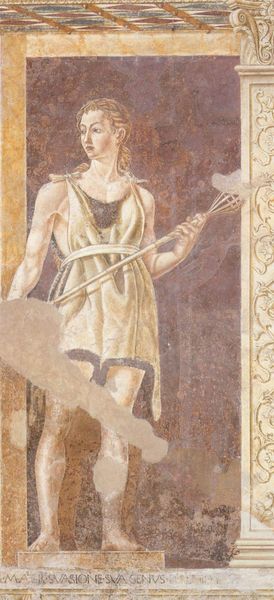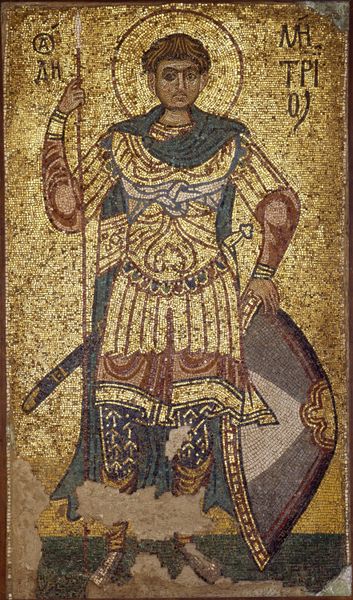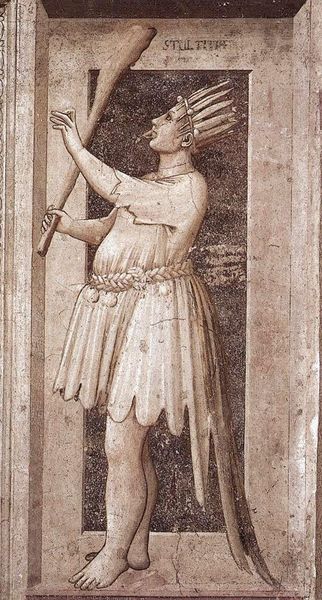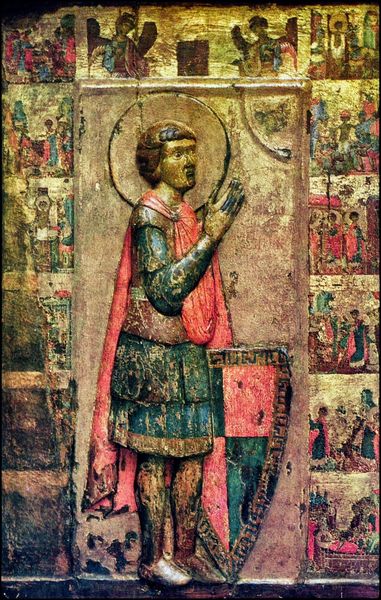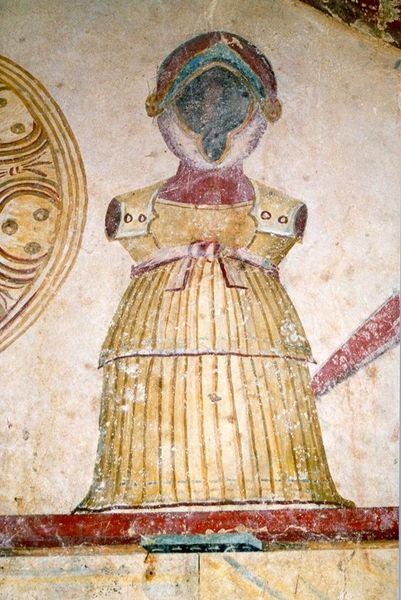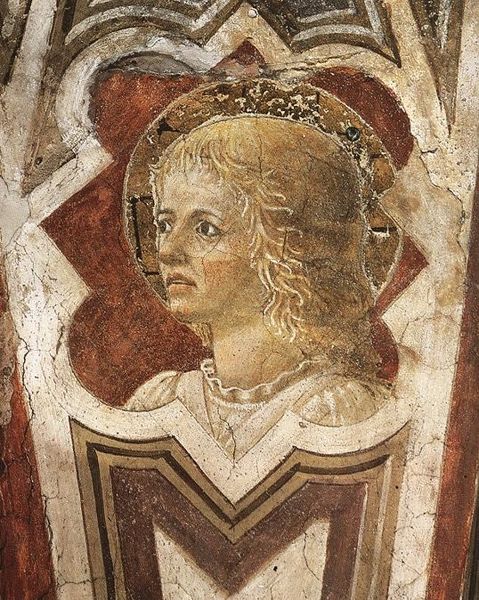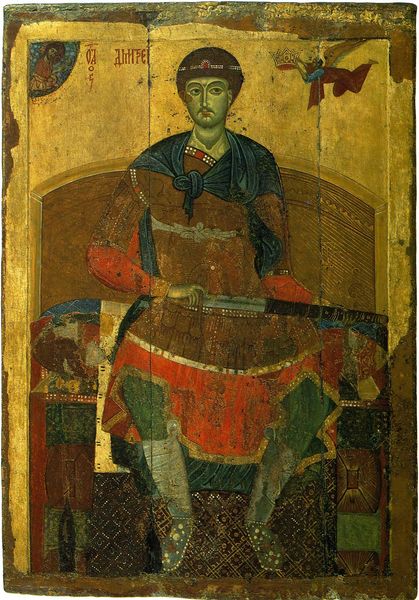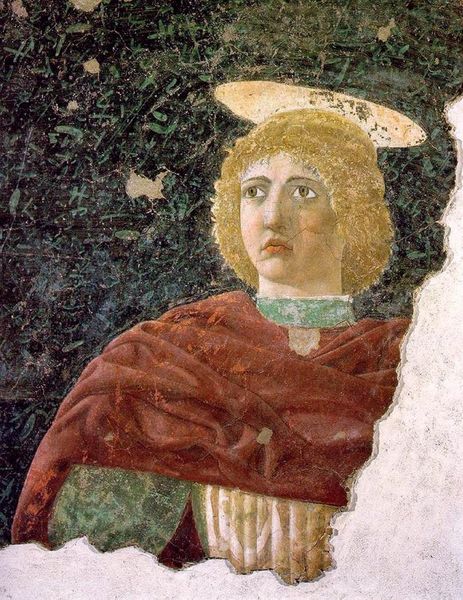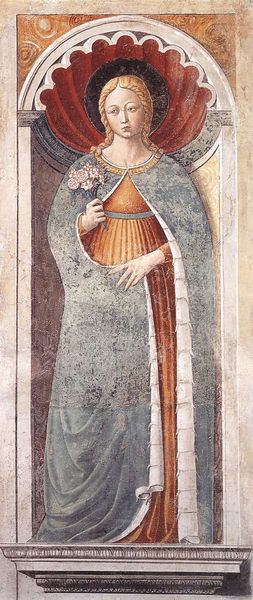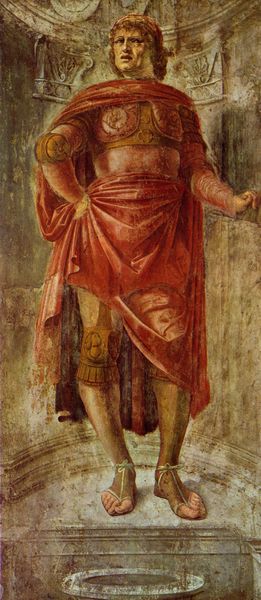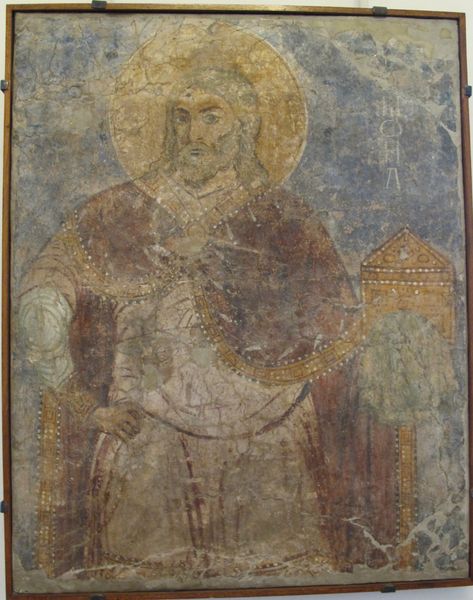
Allegory of March – Triumph of Minerva and Sign of Aries. Frescos in Palazzo Schifanoia (detail) 1470
0:00
0:00
Copyright: Public domain
Curator: Standing before us is a detail from Francesco del Cossa’s "Allegory of March – Triumph of Minerva and Sign of Aries," a fresco created around 1470 as part of the Palazzo Schifanoia decorations. Editor: My first thought is about the muted yet vibrant palette. There is such a compelling melancholic stillness, yet those bold red tights hint at the coming spring with Aries. Curator: Precisely! The fresco cycle as a whole represents a fascinating interplay of astrology, mythology, and courtly life of the time. The artist intertwines classical allegories with depictions of contemporary life in Ferrara under the rule of the Este family. Editor: Thinking about how courtly life shaped this fresco raises questions about representation and power. The male figure's garb and pose is not traditionally what we might view as classically masculine. Curator: The figure you point to forms part of the ensemble dedicated to Aries. The placement near Minerva symbolizes intellectual pursuits and a cultivated life sanctioned by powerful goddesses, therefore this imagery elevates cultural and civic virtue under the astrological sign of the Ram. Editor: How interesting! By juxtaposing them like this, a conversation unfolds regarding the alignment of astrological fate with earthly authority. Was Cossa, perhaps subtly critiquing power dynamics within the Court itself, inviting the viewer to contemplate the intersection between personal agency and prescribed roles? Curator: That's where the magic of context reveals deeper layers of interpretation. Frescoes in the Palazzo functioned as not just decoration, but also a statement, an assertion of ducal identity, power, legitimacy and cultural standing that engaged a diverse audience that stretched across societal ranks. Editor: I think it invites conversations about identity and expectation that still resonate now. In an art historical setting steeped in hierarchy, Cossa's piece dares the spectator to ask what molds our notions of gendered identities. Curator: Exactly, seeing this painting allows us to look backward to look forward, hopefully in new ways that allow for many people's lived experiences and perceptions. Editor: Thank you, seeing it now I agree!
Comments
No comments
Be the first to comment and join the conversation on the ultimate creative platform.

